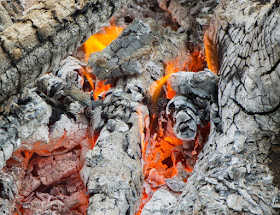"Several unresolved observations drive the need for a new theory.
--How does survival of the fittest explain the development of necessary genetic information arising in diverse organisms like bacteria, fungi, plants and animals that all work together as independent elements within a natural cycle, such as the one that converts nitrogen into multiple chemical forms?
--How does survival of the fittest explain the development of necessary genetic information arising in diverse organisms like bacteria, fungi, plants and animals. All these organisms work together as independent elements within a natural cycle. Plants convert nitrogen into multiple chemical forms and provide oxygen for animals.
--A competitive struggle for survival is also hard-pressed to explain the collective functions emerging in an ant colony which transcend the actions of individual ants—ants that can’t be “selected” since nearly all of them work rather than reproduce. As we’ll see, one approach evolutionists use to solve these enigmas is by adding a plethora of new “units of selection” like processes—something other than the organism itself—that natural selection can somehow mysteriously “see” and “select.”
Doolittle and Inkpen offer a new “way of conceptualizing evolution by natural selection (ENS) that allows processes as well as things to be ‘units of selection,’ selected for persistence and re-produced but not reproducing.” The authors have added processes that cannot actually reproduce, but merely persist in nature, as a “unit of selection.” Since the overall process is somehow “selected,” and not the individual organisms contributing to the process, then their idea is dubbed the “It’s the song, not the singer” theory of natural selection.
But what is new is actually old. Stephen J. Gould describes a 1960 theory by University of Chicago Zoologist, Alfred E. Emerson, that expands the “unit of selection” to include a population “‘with emergent characteristics that transcend the summation of the attributes of the component individuals’” just like Doolittle. Emerson’s and Doolittle’s theories do raise some fundamental questions: In evolutionary theory, what is the “unit of selection,” and do different “units” imply different definitions of “natural selection?”
...David F. Coppedge, that “Controversies 159 years after Darwin have rendered his ‘mechanism’ a mystical idea, nebulous and incomprehensible” and then he asks, “Has natural selection become the phlogiston of the 21st century?”
Many may be unfamiliar with phlogiston. It was a mystical substance that 17th-century chemists insisted was the cause of combustion. Belief in phlogiston theory persisted in the face of contrary evidence for almost a century because it was constantly being rescued ad nauseum by increasingly wild ideas." ICR
--How does survival of the fittest explain the development of necessary genetic information arising in diverse organisms like bacteria, fungi, plants and animals that all work together as independent elements within a natural cycle, such as the one that converts nitrogen into multiple chemical forms?
--How does survival of the fittest explain the development of necessary genetic information arising in diverse organisms like bacteria, fungi, plants and animals. All these organisms work together as independent elements within a natural cycle. Plants convert nitrogen into multiple chemical forms and provide oxygen for animals.
--A competitive struggle for survival is also hard-pressed to explain the collective functions emerging in an ant colony which transcend the actions of individual ants—ants that can’t be “selected” since nearly all of them work rather than reproduce. As we’ll see, one approach evolutionists use to solve these enigmas is by adding a plethora of new “units of selection” like processes—something other than the organism itself—that natural selection can somehow mysteriously “see” and “select.”
Doolittle and Inkpen offer a new “way of conceptualizing evolution by natural selection (ENS) that allows processes as well as things to be ‘units of selection,’ selected for persistence and re-produced but not reproducing.” The authors have added processes that cannot actually reproduce, but merely persist in nature, as a “unit of selection.” Since the overall process is somehow “selected,” and not the individual organisms contributing to the process, then their idea is dubbed the “It’s the song, not the singer” theory of natural selection.
But what is new is actually old. Stephen J. Gould describes a 1960 theory by University of Chicago Zoologist, Alfred E. Emerson, that expands the “unit of selection” to include a population “‘with emergent characteristics that transcend the summation of the attributes of the component individuals’” just like Doolittle. Emerson’s and Doolittle’s theories do raise some fundamental questions: In evolutionary theory, what is the “unit of selection,” and do different “units” imply different definitions of “natural selection?”
...David F. Coppedge, that “Controversies 159 years after Darwin have rendered his ‘mechanism’ a mystical idea, nebulous and incomprehensible” and then he asks, “Has natural selection become the phlogiston of the 21st century?”
Many may be unfamiliar with phlogiston. It was a mystical substance that 17th-century chemists insisted was the cause of combustion. Belief in phlogiston theory persisted in the face of contrary evidence for almost a century because it was constantly being rescued ad nauseum by increasingly wild ideas." ICR
For the wisdom of this world is foolishness with God.
For it is written, He taketh the wise in their own craftiness.
1 Corinthians 3:19
